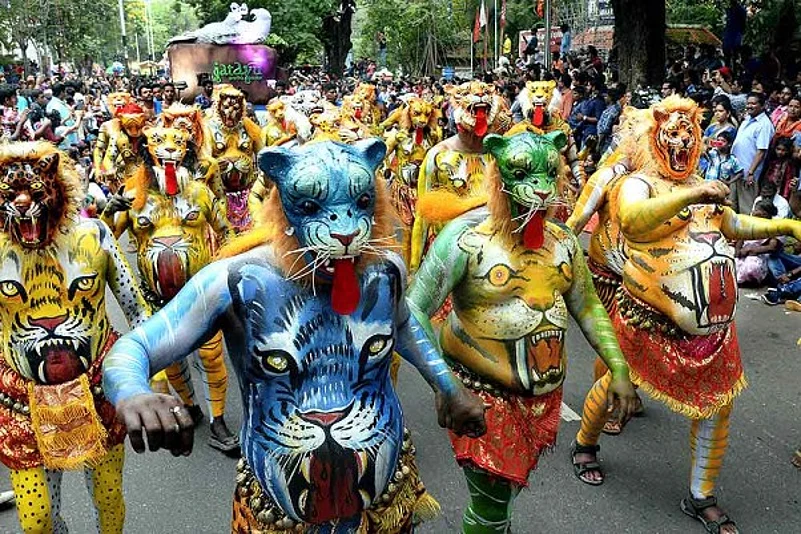Amid spending a major part of 2021 drifting apart from our folks and kin under the realms of social distancing, we have finally reached that time of the year where Keralites from all over the world step out and unite in the Indian state of Kerala to celebrate the festival of Onam.
Onam is a 10-day long harvest festival that falls in the month of Chingam. It is celebrated annually in the Southern state of Kerala. This joyous occasion marks the return of King Mahabali, an asura who ruled his land with immense prosperity and dignity.
He was considered to be a righteous leader who transformed his kingdom into a heavenly place. It is said that Kerala had witnessed a golden era under his reign. Therefore, as the fame of his kingdom arose, the talks of its grandeur reached the ears of Devas. The devas felt disconsolate with his rising popularity and feared that the kingdom of Mahabali would outrank heaven. Therefore, the Devas requested Lord Vishnu for help in a battle against Mahabali. Lord Vishnu knowing that Mahabali was a passionate devotee of him, refused to join the battle. Rather, he disguised himself into a poor Brahmin boy named Vamana and paid a visit to Mahabali asking him to grant three wishes. He requested a piece of land that measured up to ‘three steps’. Mahabali immediately granted his wish, however after the first two steps, Vamana turned into an enormous size which occupied the whole of his kingdom. Realising that the poor brahmin boy was an avatar of Lord Vishnu, Mahabali offered his head for the third step.
Advertisement
Dazzled by his acts of devotion and reverence, he allowed Mahabali to return to Earth every year. It is his yearly visit which is commemorated with great pomp and exuberance.
The festival Onam is spread across 10 days, among which the first and the last day are deemed as the most crucial. The celebration of the festival begins at the Thrikkakara Vamanamoorthy templewhere people light lamps and hoist the flag of Onam. Many people make a carpet of flowers or ‘rangoli’ called ‘Pookkalam’ and place it on the entry of their house, to welcome the king. A diverse range of traditional rituals are held like the boat race, dance events, floral Rangoli making, parades, the grand Onam feast, etc.
Advertisement
The grand feast, also known as ‘Onasadya’ comprises nine courses including Banana chips, various vegetables, soups, Dal, Avial, Sambhar, pickles, coconut chutney, Rasam, Rice, Pachadi (a sweet dish), and a lot more. Men and women dress up in their traditional attires and serve this meal on a banana leaf.
Onam also features a parade which is a sight of elephants marching, folk art forms performances, colourfully dressed people, along with a booming sound of drumbeats and music.
The snake boat race, also known as ‘Vallamaki’ is another event of Onam that has gained much traction in many parts of the country. Men and women from faraway places come to Kerala to watch and cheer for the race. This event is particularly held on the Pampa River, where innumerable oarsmen row huge snake-shaped boats, with a zest to gain victory.
The festival of Onam is also considered eminent for its traditional dance forms and music. One gets to see a various range of dance forms being performed during this festival. Among which, Kathakali dance is the most customary. The Kathakali dancers wear intricate costumes, heavy makeup, face masks and stage several mythological legends.
The ornate decoration, gala performances, delicious rustic feast, etc, is organised to welcome their King Mahabali and to express to him that the people of his kingdom are flourishing and content. The auspicious occasion awaited by many Keralites every year, in actuality is a treat to the eyes.




















